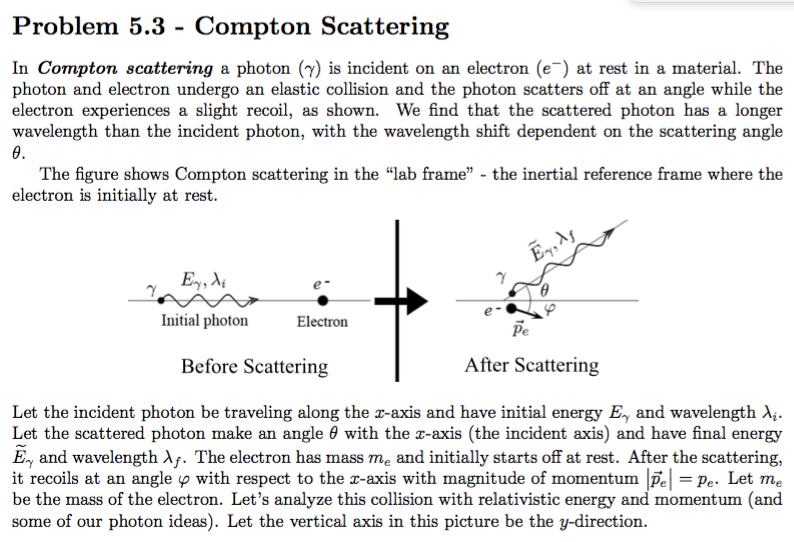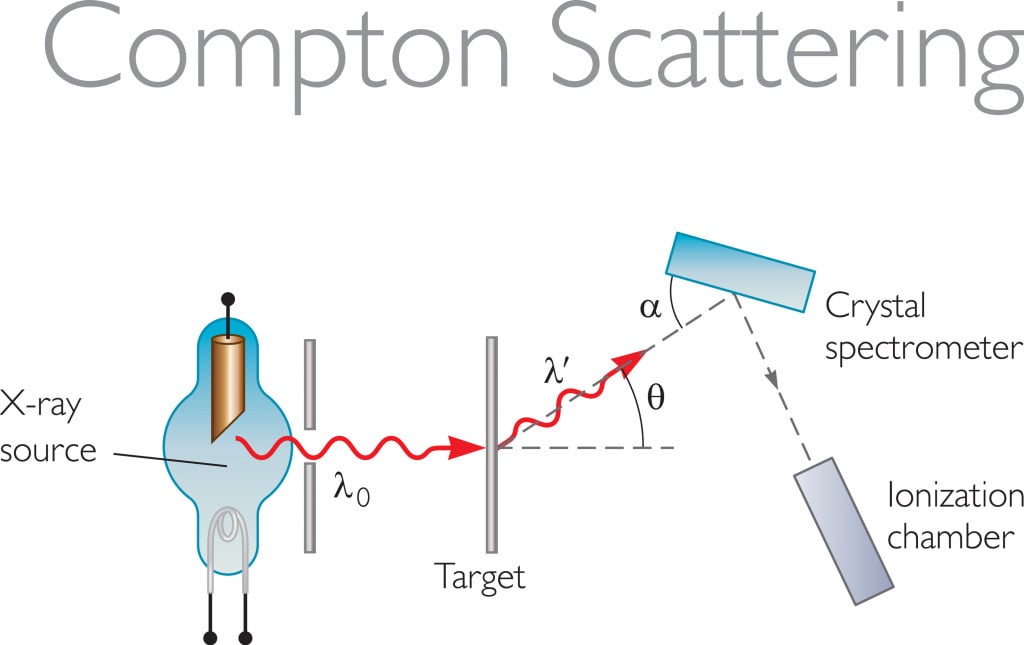
The photon comes away from the collision with less energy and therefore longer wavelength than it had before the collision. Here m is the mass of the particle, θ is the angle between directions of scattered and incident rays.\). Background ¶ When a photon is scattered by a charged particle, such as an electron, it imparts some of its energy and momentum to the particle, which then recoils. The Compton scattering equation to find the wavelength extension is Δλ = h/(m x c)(1 - cos(θ)). What is the wavelength extension formula? While the wavelength is not observed in the photoelectric effect.Ĥ. The wavelength of the scattered photons is more than the incident photon. The processes in which we are interested are the Bhabha (electron-positron) scattering and the Compton scattering in the specific case where the electron is in a hydrogen-like potential. The photoelectric effect is caused by the weakly bound electrons that are ejected from the surface of the material and it was explained by Albert Einstein. Compton, is the scattering of high-energy photons by electrons. What is the difference between the Compton effect and the photoelectric effect?Ĭompton effect is caused by the inelastic scattering of high-energy photons and Arthur Compton explained it. Compton scattering, discovered by Arthor H.

Multiply the result with 1 minus cos of the angle between the scattered and incident rays.ģ. To find the Compton scattering wavelength, divide the constant by the product of mass and light speed. It is the main cause of scattered radiation in a material. When the charged particle transfers parts of its energy to a photon, then it is called inverse Compton scattering. We discuss the nature of the bound Compton scattering and consider methods to obtain total cross sections for this process. Compton effect or Compton scatter is one of principle forms of photon interaction. The scattering of photons from charged particles is known as the Compton scattering. Physicscalc.Com has got concepts like friction, acceleration due to gravity, water pressure, gravity, and many more along with their relevant calculators all one under one roof. Since this is a two body elastic scattering process, the angle of the scat-tered photon is completely correlated with the energy of the scattered photon by energy and momentum conservation. = 6.62607 x 10 -34/(9.15 x 10 -31 x 299) x (1 - cos 80) The Compton eect is the elastic scattering of photons from electrons. Wavelength extension Δλ = h / (m * c) * (1 - cos(θ)) Mass of the particle m = 9.15 x 10 -31 kg Perhaps you are reading too much into the pictures Just a thought. One of those interactions seems out of causal order but none the less exists in the formal series. In physics, Compton scattering or the Compton effect is the decrease in energy (increase in wavelength) of an X-ray or gamma ray photon when it interacts. Find the wavelength extension, if the mass is 9.15 x 10 -31 kg. The diagrams for Compton scattering focus on those interactions which contribute to the desired amplitude which is defined by initial and final states.
COMPTON SCATTERING FREE
Question: Let us calculate the wavelength extension of a photon which is scattered on a free electron by an angle of 80 degrees. Θ is the angle between the directions of the scattered and incident rays. H = 6.62607 x 10 -34 J/S that is Planck constantĬ is the speed of the light, i.e 299792458 m/s

As mentioned on the previous page, Compton scattering occurs when the. The difference between the wavelengths of scattered and incident light can be calculated using Compton scattering equation Compton scattering results in the ejection of both an electron and low energy photon. When one photon collides with another, then electron changes its direction. The use of words ‘photon’ and ‘collision’ suggests a corpuscular nature of light, i.e., that light may be viewed as a stream of particles with well-defined energies and momenta. A photon is treated as the massless particle that transports energy. ‘ Compton scattering ’ refers to a collision between a photon and a charged particle, often an electron, in which the photon loses a substantial fraction of its energy.


 0 kommentar(er)
0 kommentar(er)
